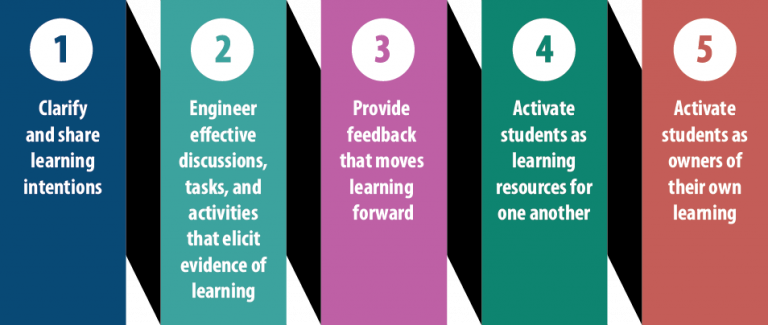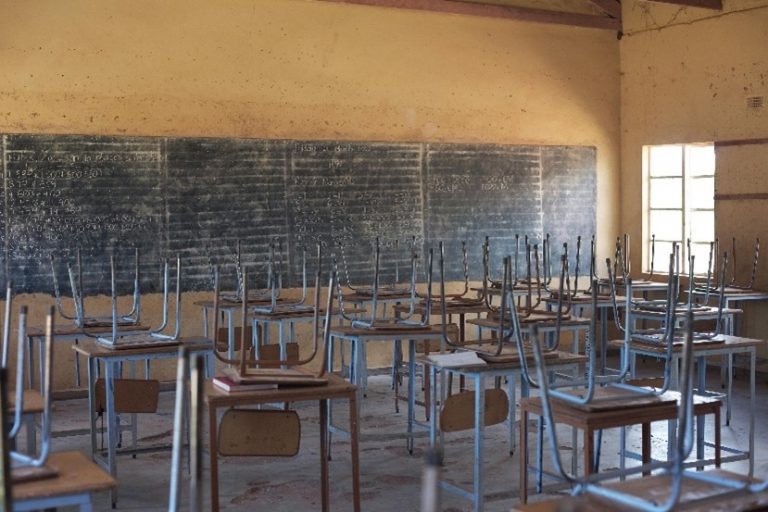Dig Deeper: Assessment and Feedback
Assessment for Learning (AFL), as discussed in Dig Deeper: Assessment for Learning, is all about assessing students constantly throughout the learning process rather than merely at the end of a learning cycle. When used correctly, AFL helps instructors adapt their instruction to meet students where they are at and help them get where they need to be.

There are five steps to implementing AFL successfully, this post delves into steps 2 and 3: engineer effective discussions, tasks, and activities that elicit evidence of learning and provide feedback that moves learning forward.
Assessment
Within the AFL process, assessment is where instructors determine where students are at. A task that instructors are constantly engaged in. It may sound exhausting to constantly engage in assessment—teaching is already hard enough—in truth, assessment can become a natural part of an instructor’s teaching methodology. So how can an instructor engage in constant assessment?
1. Ask Questions, Then Follow Up: Engaging students with questions is a natural part of teaching. However, not all questions are created equally. Closed questions, for instance, generally require the simple recitation of facts and tend to be either right or wrong. These questions have their place! But, where possible, instructors should attempt to ask open questions. Open questions often require more than a simple recitation of facts. They often either require a student to give an opinion or to extrapolate from mere fact to the application of that fact to a real-world scenario.
But engaged questions go beyond that first level. The key, here, is to not stop at the first answer. Ask for students to explain their thought process, dive a little deeper, or give examples. You can also engage other students by asking them to build off fellow students’ answers.
2. Discuss in Groups, Then Highlight: The ability to build off fellow students’ answers is an invaluable one. One natural way to encourage this is through group discussion.
Instructors can rotate through the classroom and listen to each group discuss and later highlight insightful discussion points.
3. Pair Students Together, Then Spotlight: At times, it can be intimidating for students to be spotlighted in the classroom; it can be easier for students to engage in conversation one on one with another student. Once this is over, ask for students to share any insight the activity may have sparked.
Both Group Discussions and Paired Discussions—and how to help students utilize them to their fullest—will be covered further in our upcoming post on peer and self-assessment!
Feedback
If assessment is the practice of instructors meeting students where they are at, feedback is the tool for helping students get to where they need to be. There are two types of feedback: ego-focused feedback and task-focused feedback. They are not created equal.
“Great work, Sally!” “Lovely essay, Taylor.” “A -, well done, Landon.” “Thank you for your contribution, James.” These examples of feedback are ego focused. While it has its place—everyone wants encouragement, after all—ego-focused feedback is often considered superficial; it does not move the discussion forward. While it may help a student feel good, it gives them little direction for further development. Task-focused feedback, on the other hand, can help students dive deeper into their own learning.
Feedback, like assessment, takes place at all levels of the learning cycle. During classroom discussions it can be as simple as saying, “That’s excellent insight, Maria. Now, can you tell me more about how that applies to our earlier discussion?”
The classroom itself is not the only place that an instructor can provide feedback. Homework is another useful tool. While often considered an assessment tool, it is a missed opportunity for excellent feedback. When going through students’ homework, consider refraining from immediately assigning a grade. Instead, provide comments on places where they did well, as well as where they could improve or dig deeper. Allow students to respond to this feedback and improve both their work and their understanding.
Assessment and feedback create an upward cycle of learning; they build off one another, each increasing the efficacy of the other. Assessment and feedback, continuously applied, allow both student and instructor to reach the heights of success.
Sources
Cambridge International Education Teaching and Learning Team. Getting started with assessment for learning. Cambridge Assessment International Education. Available at: https://cambridge-community.org.uk/professional-development/gswafl/.






